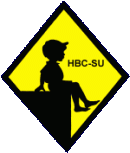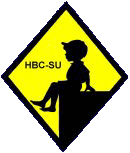
Gym classes were held mostly in secondary schools. Primary schools had recess for the younger children, but gym was less common. Few primary schools had gymnasiums, locker rooms, and gym uniforms. They often did have multi-purpose rooms where a variety of activities were possible, but formal gym programs were not common. These programs were common in secondary schools. Most secondary schools had gym programs with required uniforms. Gym was given a greater emphasis in American than was common in most European countries, perhaps with the exception of Britain. These uniforms varied significantly over time. They were also varied by gender, although in recent years, perhaps since the 1980s, boys and girls uniforms have become more alike.
Gym classes were held mostly in secondary schools. Primary schools had recess for the younger children, but gym was less common. Few primary schools had gymnasiums, locker rooms, and gym uniforms. They often did have multi-purpose rooms where a variety of activities were possible, but formal gym programs were not common. These programs were common in secondary schools. Most secondary schools had gym programs with required uniforms.
Gym was given a greater emphasis in American than was common in most European countries, perhaps with the exception of Britain. European schools tend to have a more stricter focus on academics than American schools.
These uniforms varied significantly over time.
They were also varied by gender, although in recent years, perhaps since the 1980s, boys and girls uniforms have become more alike. Boy's from an early time wore "T"shirts and short pants. Girls have had more diverse gtm outfits. In the early 20th century we notice girls wearing middy blouses with long bloomers and long stockings. In the mid-20th century we see girls wearing one-piece suits in either the romper or short pants style. The New York girls in 1943 wear these one-piece suits with short pants legs (figure 1). A reader writes, "I would have guessed the 1930s for figure 1, but note it was dated 1943. Since that is in the midst of WWII and clothes were rationed it is very possible that older styles were being worn by teens." HBC is not sure that we would describe these one-piece suits as an "older style". We note them being worn into the 1960s. The romper style suits were worn, for example, at Wakefield High School in the early 1960s. By this time schools were beginning to shift over to short pants and "T" shirts like the boys wear.
e do not yet know a great deal about American gym classes in the 19th-century. We believe that gym developed as high schools (secondary schools) developed. We are not sure just when gym classes began. Virtually all high schools had gym programs by the 20th century. We suspect that American schools followed European models, at least at first. Nor do we know when gym uniforms were first introduced. We note boys doing calesthetics in the early-20th century. They look to be wearing their own clothes rather than gym uniforms (figure 1). We are not sure when gym uniforms were firt worn. We think that they were being commonly worn in high schools by the 1920s. Gym or Physical Education (PE) used to be an important part of the school program, especially at the secondary level. Primary (elementary) schools did not always have PE classes and did not have special gym clothes or uniforms. This was different in secondary clothes. PE was a class and grades were given. There were uniforms and most schools were strict about wearing the proper gym clothes. This changed in the 1970s when school dress codes and gym uniform requirements were significantly relaxed. The PE program was also deemphasized at many schools. A HBC reader has provided us some information about his gym experinces: Gym uniforms in California during the 1960s-70s. As American secondary schools were coeducational, we believe that gym programs for girls developed at about the same time as the boys' programs. Both the programs and of course the gym uniforms were different. Boys could do gym in their regular clothes, but this was not the case for girls. We believe that girls were wearing gym uniforms by the late-19th century. Middly blouses, bloomers, and long stockings were common. They eventually evolved into romper outfits. Boys by the interwar era were wearing T-shorts and short pants--boxer shorts.
Related Chronolgy Pages in the Boys' Historical Web Site
[Main Chronology Page]
[The 1900s]
[The 1910s]
[The 1920s]
[The 1930s]
[The 1940s]
[The 1950s]
[The 1960s]
[The 1970s]
[The 1980s]
[The 1990s]
[The 2000s]
Navigate the Relate Boys Historical Clothing Style Pages
[Main country page]
[Long pants suits]
[Short pants suits]
[Lederhosen]
[Knee socks]
[Eton suits]
[Jacket and trousers]
[Blazer]
[Sports]
[Rompers]
[School sandals]
Navigate the HBC Country School pages:
[Return to the Main American School activities page]
[Australia]
[England]
[France]
[Germany]
[Ireland]
[Italy]
[Japan]
[New Zealand]
[Poland]
[Singapore]
[Scotland]
[Singapore]
[United States]
Navigate the HBC School Section:
[About Us]
[Activities]
[Chronology]
[Clothing styles]
[Countries]
[Debate]
[Economics]
[Garment]
[Gender]
[Hair]
[History]
[Home trends]
[Literary characters]
[School types]
[Significance]
[Transport and travel
[Uniform regulations]
[Year level]
[Other topics]
[Images]
[Links]
[Registration]
[Tools]
[Return to the Historic Boys' School Home]
